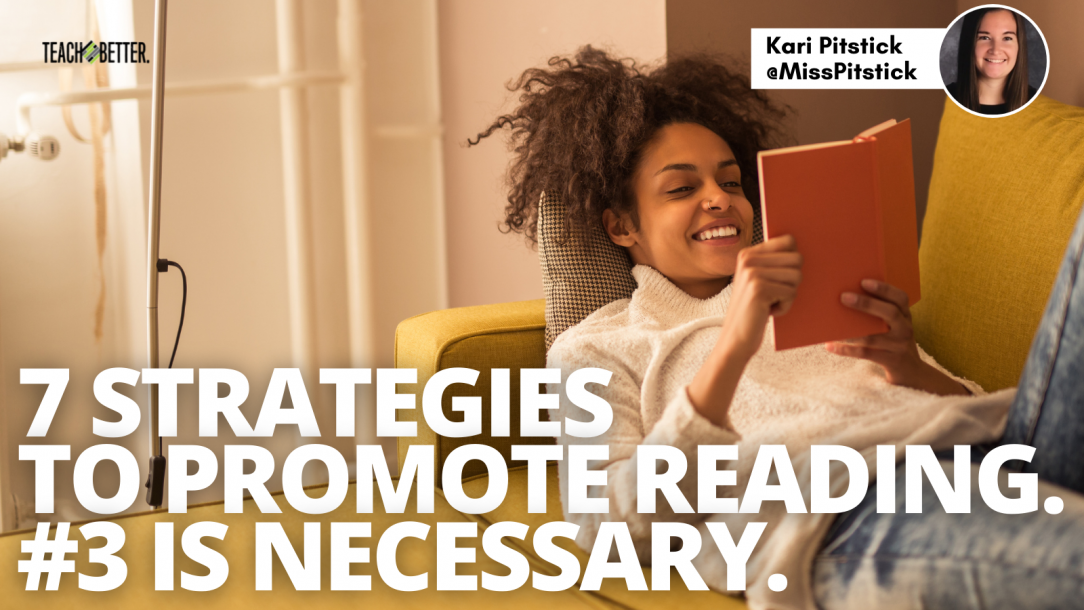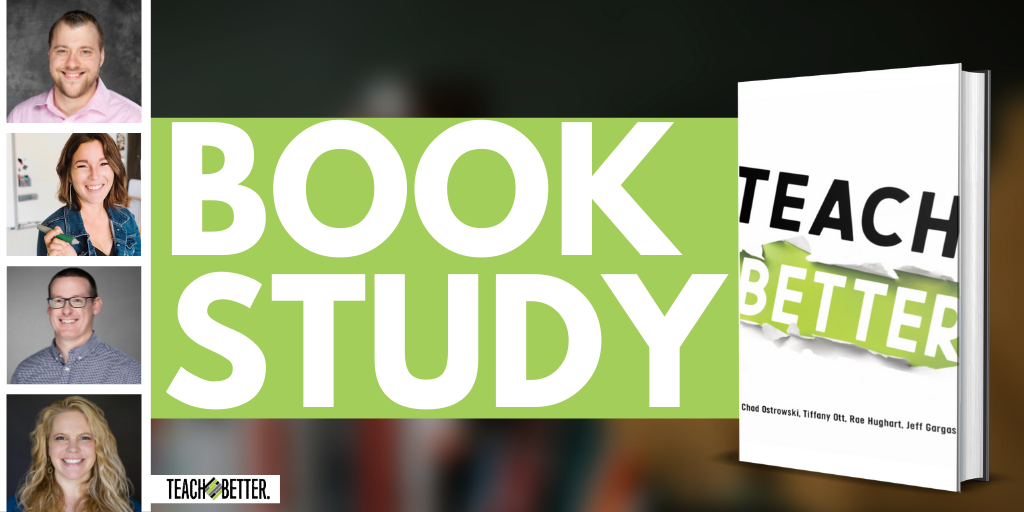TL;DR:
- Consider how you promote reading in your classroom so that you are instilling a love of learning among your students.
- Promote reading in your classroom by sharing what you are reading and giving students time to share what they are reading. Allow the use of audiobooks and e-books. Give students time to read in class and read with them. Let students get comfortable while reading and make frequent visits to the library.
- Establish routines so students buy into and value the class expectations.
I think it goes without saying that teachers are reflectors. We are constantly reflecting, thinking about how we can do better—improving lessons, building relationships, and everything in between. One aspect of teaching that is a constant source of reflection for me is reading engagement. How can I promote reading to my students? How do I engage my students with reading independently and instill a love of reading?
Below, I am going to share with you 7 strategies to promote reading to students that I have found to be effective. You may already use some of these strategies; consider implementing more ideas, but start small!
Strategy #1 to Promote Reading: Share what you are reading.
I share what I have read in a couple of different ways. Each Tuesday, we have “Book Talk Tuesday.” Sometimes, I begin a book talk by reading the first chapter, depending on the first chapter of any particular book, or I may just talk about the book.
As I’m sharing the book, I have a slide projecting a picture of the cover, title, and author. Students have their book wish lists out during all of this so if a book resonates with them, they can make a note of it for later.
After the book talk(s), I then pass the book(s) around for students to take a closer look. I also do a raffle drawing for any student who is looking for or ready for their next independent book at that time! Any student who is interested writes their name and puts it in a small bucket next to the book on the front table, and at the end of the day, I draw a winner to check out the book first.
You know your students best. Do what you can to create an environment that will promote reading. It matters. It’s time to make an impact and create lifelong readers through these everyday routines. Click To TweetStrategy #2 to Promote Reading: Allow audiobooks and e-books.
So many students come into my class disliking reading. Part of meeting students where they are is allowing them to read and consume information in a way that they prefer. Not every student feels that sense of happiness holding a book in their hands like I do. If a student prefers to read electronically or listen to the book, I allow them to do that.
Our library has a huge selection of audiobooks and e-books. I have no problem with audiobooks because students are still thinking critically and engaging different parts of their brains to keep track of the characters and events while listening. If you are someone who doesn’t feel comfortable allowing students to listen to audiobooks, you could always try encouraging them to check out a hard copy of the book to follow along as they listen.
Strategy #3 to Promote Reading: Give students time to read in class. And read with them.
Independent reading time has been a game changer for me. There was a time when I didn’t include independent reading as a part of our daily routine because I didn’t feel we had time for it.
Think of it more as an investment—this is a chance in a student’s day where, for once, they are not being told what they have to read, how long they have until it needs to be done, and are not being assessed on the reading they’re doing. If a task is always tied to something that is perceived in a negative way (being told what to do, given a deadline, assigned a task), then the task itself will become negative.
I used to have students complete book projects each quarter aligned with their independent reading, but that turned something that was supposed to be just fun into an assignment a chore. How about just conferencing with students occasionally or include other reading tasks? (See strategy #6 for more ideas on how to monitor comprehension without the use of formal assignments/projects.)
Like the aforementioned practices that I learned were maybe not best practice when it comes to independent reading, there was a time when I was afraid to read with my students during independent time.
When I learned that other ELA teachers in my school do the same, that gave me the initial validation I needed to do this.
Truth be told, I remember silent reading time as a student. We had to sit in our desks, facing forward. And I have memories of some teachers being on their computers or grading papers during that time.
Consider: Is this the kind of environment you want to create in your classroom? If I want to promote reading to my students, I will model it by reading with them. There are days I dedicate time during independent reading to informally conference with students about their books or to help a student find their next book from my classroom library. But on a majority of the days, I am reading right alongside them.
So many students—teachers included—have a number of things going on after school, and some aren’t home until late and truly might not have the energy to focus on a book before bed. There could also be a number of distractions at home that are out of our students’ control. If I expect my students to read, I need to give them time to do this.
Strategy #4 to Promote Reading: Let students move around the room.
When possible with COVID restrictions, I let students move around the room as they read. I’ve heard the comment before, “Well then students are just going to sit by their friends and talk.” This could be true, but just make sure you set your expectations early on and stick to them.
If students are whispering to friends during this time, this indicates to me that they probably need a new book—a better book, more suited for their interests and/or reading level. They may also be asked to move seats, too.
You know your students best, and this strategy might be something that is earned or used at your discretion.
Strategy #5 to Promote Reading: Visit the library.
If your school has a library, try to schedule some class visits. At the least, allow students to visit the library during independent reading time if they are ready for a new book, as long as it aligns with your school’s policies.
Our library has a lot of cool furniture, so it’s always a treat when we get to make a visit to the library together. Students may be hesitant to make a trip to the library on their own, but scheduling class visits can allow them a chance to browse through a selection of books they may not have otherwise seen.
Strategy #6 to Promote Reading: Give students time to share what they are reading.
This strategy is a newer one in my toolbelt. Once a week (and someday I will probably make this a daily routine), I build in time for students to share what they are reading with their peers. I try to change up how we do this so it’s not always the same. Sometimes I may let them pick a partner, they may chat with their table group or use an online tech tool like Flipgrid. This time can be used to better monitor what students are reading and be an opportunity for students to add to their book wish lists.
I feel like the possibilities here are endless. Think of all the resources we have at our disposal that we can utilize to allow students to share with one another. Teachers recommending books to students is crucial, but peer recommendations can be just as valuable.
However students are sharing, this can also be a time for you to strategically monitor their comprehension, whether that be through conversations of your own or observing students’ engagement with the various activities.
[scroll down to keep reading]Strategy #7 to Promote Reading: Establish routines.
With all of that, routines are necessary. In my classroom, we have independent reading time to start class on Mondays, Wednesdays, and Thursdays. Tuesdays are Book Talk Tuesdays. (Fridays are for Free Write Friday.)
When students come into my classroom, they know to get their binders, record their assignments, complete the bell ringer, and whatever else there is for them to do that day. They then know what to expect next.
I take a lot of time at the beginning of the year going through expectations about independent reading time. While I do allow students to listen to music during our independent work time each day, I do not allow music during reading time. Students can choose where they sit, but they know if they are communicating with a friend, they will be asked to choose another space (and then I’ll investigate what book they’re reading and see if they want help picking a better one). I explain they can use that time to find a different book from my classroom library or from the school’s library, but it is not a time to be doing any assignments—for any classes, including ELA.
Having established days for these various things has done wonders for my classroom management. And it helps students value and buy into the class expectations. Students know that they will move around the room to find a comfy place to read and that we read for about 15 minutes. They know the ending time will be written on the board. And almost every day, once we get the tasky things completed in the beginning of class, students are practically out of the seat to get to their reading spot before I give them the official go-ahead, and I rarely have negative behaviors exhibited during this time.
Promote reading in any way you can, because it matters.
You can start small and pick and choose any of the above strategies to promote reading in your classroom. No matter which ones you choose, do them intentionally. But if you can get there, I would recommend doing all of them. You know your students best. Do what you can to create an environment that will promote reading. It matters. It’s time to make an impact and create lifelong readers through these everyday routines.
If you have any other strategies you use, I’d love to hear them! Though I have found success with these strategies, I’m always looking for new ways to bring the excitement of reading into the classroom. Tweet your ideas and tag me (@MissPitstick) with the hashtag #TeachBetter!
About Kari Pitstick
Kari Pitstick is a 7th grade English Language Arts teacher and track & field coach in Illinois. She’s also the Digital Content Coordinator for the Teach Better Team. She graduated from Illinois State University in 2015 with a bachelor’s in Middle Level Education, and American College of Education in 2018 with a master’s in Curriculum & Instruction.
She knew she wanted to teach at the middle level since she was in middle school herself. One of her main missions is to provide a safe and friendly environment for students to explore their passions as learners and as people.
Kari is an avid reader, spending most of her free time reading and writing, and she hopes to share that passion with all those around her—students and adults, alike!




